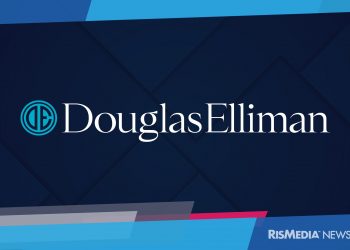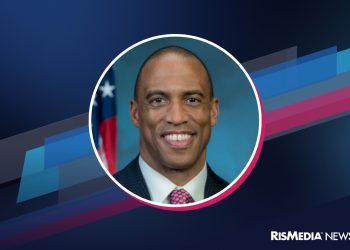RISMEDIA, Jan. 16, 2008-The Mortgage Bankers Association (MBA) projects that economic growth will continue to slow through the first half of 2008, but expects economic activity will begin to pick up in the second half of 2008 and resume trend-like growth toward the end of 2009. Total mortgage production will be down 16% to $1.96 trillion this year from a projected $2.34 trillion in 2007. Total originations should see a further drop of four percent in 2009 to $1.88 trillion.
“The principal concern of the current credit crisis lies in the possibility that banks will eventually run out of capital. Banks are running up against capital limits as they write down the value of assets at the same time they are putting loans on their balance sheets because the markets for securitized products are essentially closed,” said Doug Duncan, MBA’s chief economist and senior vice president for Research and Business Development.
“Fortunately, the banking system entered the current credit crunch well capitalized, so the danger of a sharp and widespread contraction of credit availability does not seem imminent. The recovery period in financial markets may take longer this time than it has in past financial crises, but a turn for the better still appears to be a good bet later in the year.”
“Employment growth has slowed significantly from the pace early in 2007 with the December data reporting a decline in private sector payrolls. High gasoline and food prices are siphoning off purchasing power. Home prices are falling and will likely continue to decline,” said Duncan. “The case for avoiding recession, however, is still a plausible one. We expect housing starts to hit bottom before the end of 2008. Since they have already fallen nearly 50 percent from peak levels, the drag on GDP growth will diminish as the year goes on. Net exports, meanwhile, should continue to increase in response to relatively strong growth abroad and the impact of past declines in the dollar on our competitive position in world markets.”
“Core inflation has also crept up a bit — from a year-over year increase of 1.9 percent a few months ago to 2.2 percent in November,” continued Duncan. “These recent increases in inflation may prove to be temporary. Oil prices may be stabilizing at between $90 and $100 a barrel; food prices may continue to rise but not by more than the 5% year-over-year increase presently underway; core inflation may subside a bit as the economy slows. Even if these assumptions do not prove valid and inflation picks up a bit further, the Fed should be able to take countervailing actions later on to bring inflation back down to desired levels without undue difficulty.”
Duncan continued, “Over the 12 months that ended in November, consumer spending adjusted for inflation rose 3.0 percent, exceeding by a significant margin the 2.1 percent increase in real after-tax incomes. Our expectation is that consumer spending growth next year will slow but spending should still increase by about 2 percent over the four quarters of next year.”
Duncan expects one more reduction in the fed funds rate to come at the late January Federal Open Market Committee meeting (FOMC) and the Fed to say less about inflation in the next few FOMC statements and more about the need to do what is necessary and possible to keep the economy away from the brink of recession.
“The 30-year fixed-rate mortgage yield should trend up only modestly higher over the second half of the year, reaching 6.2 percent by the fourth quarter and edging up just slightly through 2009. Thus, interest rates will still be quite low by historical standards,” said Duncan.
Following are the key points of the latest MBA forecast:
• Housing starts and home sales expected to continue to trend down and reach bottom around the end of the 3rd quarter 2008.
• Total existing home sales for 2008 will decline by about 13% from 2007 to 4.94 million units. Sales will pick up by about four percent in 2009.
• New home sales will decline by about 15% in 2008 from 2007 to 666,000 units. We expect sales to increase about seven percent in 2009.
• Median home prices for new and existing homes are expected to decline this year, with nominal median prices falling about two percent. Prices should increase by between one and two percent in 2009.
• Residential purchase mortgage originations will decline about 18% in 2008 to $955 billion from a projected $1.16 trillion in 2007. Given a recovery in sales and prices in 2009, purchase originations should be up by five percent to one trillion in 2009.
• The yield on 10-year Treasuries — the benchmark for fixed rate mortgage yields — are projected to decline in the current quarter as the Federal Reserve is expected to continue with its easing. However, we do not expect a large pickup in refi activity as we would normally do for several reasons. First, lending standards have been tightened significantly. Second, the spread between the 10-year Treasury yield and conforming mortgage rates as well as the spread between conforming mortgage rates and jumbo rates has widened. Third, home prices have declined in many areas. These factors have combined to discourage some refi activity, especially in areas with relatively high share of jumbo loans and falling home prices. Thus we project that refinance originations will decline about 14% to $1.01 trillion in 2008 from a projected $1.17 trillion in 2007. Refi activity will decline by another 13% to $883 billion in 2009 from 2008.
• Total mortgage production will be down 16% to $1.96 trillion this year from a projected $2.34 trillion in 2007. This would mark the first time since 2000 that total mortgage originations fall below $2 trillion.
• Total originations should see another drop of four percent in 2009 to $1.88 trillion.
For more information, visit www.mortgagebankers.org.










